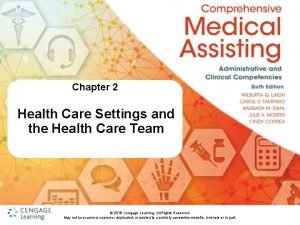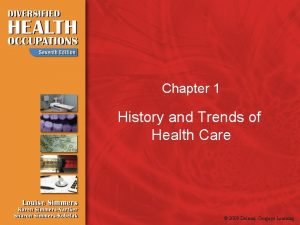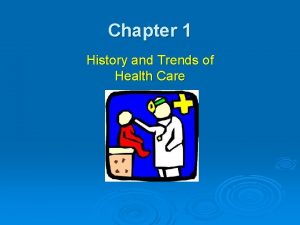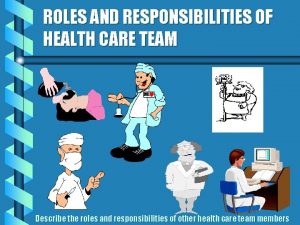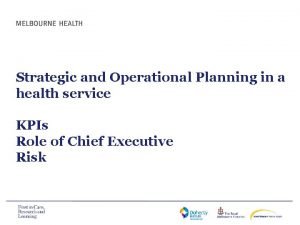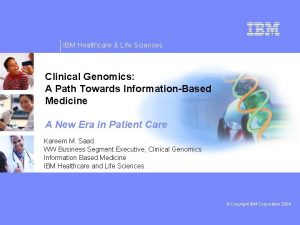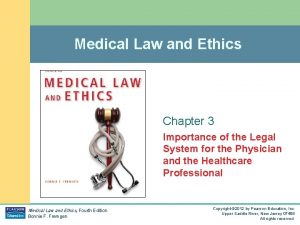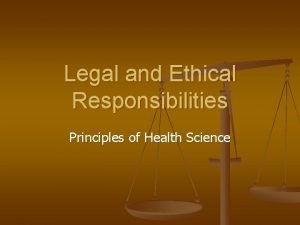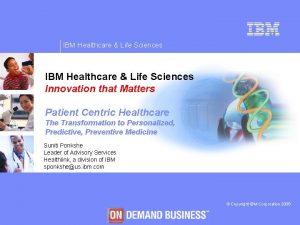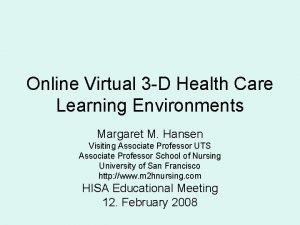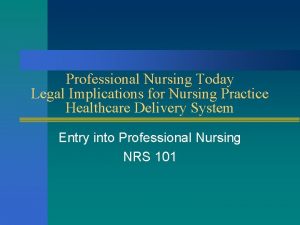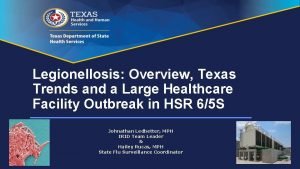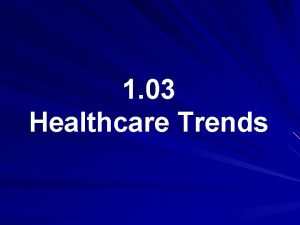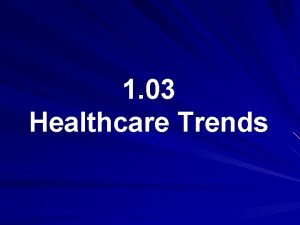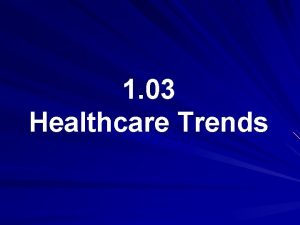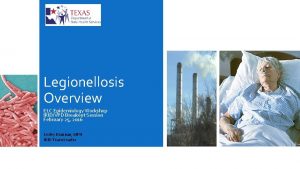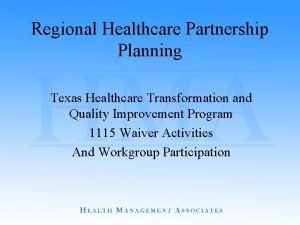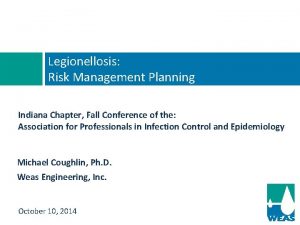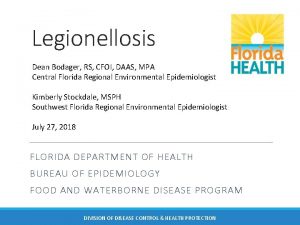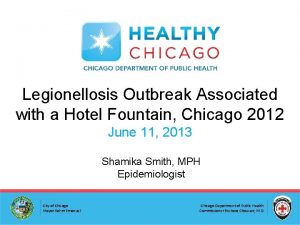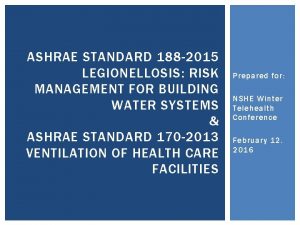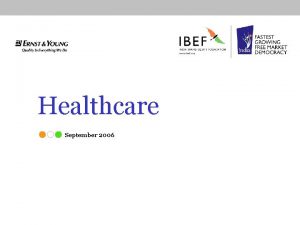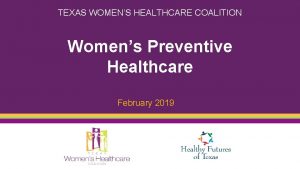Legionellosis Overview Texas Trends and a Large Healthcare





























- Slides: 29

Legionellosis: Overview, Texas Trends and a Large Healthcare Facility Outbreak in HSR 6/5 S Johnathan Ledbetter, MPH IRID Team Leader & Hailey Rucas, MPH State Flu Surveillance Coordinator

Topics • Legionellosis Overview • Texas Legionellosis Data Trends • Large Healthcare Facility Outbreak in HSR 6/5 S: A DSHSAustin Perspective

Legionellosis Overview

Legionella Ecology • Legionella bacteria live in water (primarily) and soil, can live inside protozoa • Favorable conditions: • • Stagnant water (dead legs in plumbing) Warmer water (prefers: 77°F-108°F) Presence of organic matter Absence of residual disinfectant

Infection and Prevention • Transmission/infection: • Legionella can be a problem in manmade water systems • Need amplification, aerosolization (or aspiration), and infection of susceptible host • Occasionally acquired from compost or potting soil exposure (L. longbeachae) • No person-to-person transmission (limited? ) • Prevention: • Surveillance and outbreak investigation • Identify and control sources • • • Maintain equipment Legionella prevention plans Maintain hot (≥ 140°F) and cold (≤ 68°F) water temperatures Avoid high-risk behaviors (e. g. , smoking) Wear PPE if occupational exposures

Sources of Aerosolized Legionella • • • Cooling towers Evaporative coolers (swamp coolers) Misters (produce, recreational) Decorative fountains Spa pools, thermal pools, springs Humidifiers Respiratory therapy equipment Domestic plumbing (hot and cold water) Etc.

Legionellosis Disease • Both of these legionellosis conditions are reportable: 1. Legionnaires’ disease • Incubation period: 2 -10 days • Cough, pneumonia, chest pain, fever, chills, myalgia, fatigue, N/V/D, abdominal pain, AMS; • 5%-30% of cases die • Higher in nosocomial cases 2. Pontiac fever • Incubation period: 5 -72 hours • flu-like (milder), some with GI symptoms, no pneumonia, no deaths • Hospitalization rarely required • Does not result in death • Complete recovery usually occurs within a week without antibiotics

Legionellosis Risk Groups • Increased risk of infection: • Recent travel with an overnight stay outside of the home, including stay in a healthcare facility • Exposure to hot tubs • Recent repairs or maintenance work on domestic plumbing • Renal or hepatic failure, diabetes, chronic lung disease • Systemic malignancy • Immune system disorders • Smoking (current or former) • Age ≥ 50 years

Clinical Laboratory Testing • Legionella pneumophila serogroup 1 (Lp 1) estimated to cause 85% of human cases • Lab confirmation (case criteria) requires one of these: • Culture positive for ANY Legionella species • Primary method of detecting non-Lp 1 cases • Important for outbreaks (link clinical & environmental samples) • Legionella urinary antigen test positive • Detects Lp 1* • Most common test type • Seroconversion by a fourfold or greater rise in specific serum antibody to Lp 1 • Ask clinical labs not to discard Legionella isolates

Legionellosis Case Definition/Classification p. 164 EAIDB Investigation Guidelines • Clinical Case Definition • Associated with two clinically and epidemiologically distinct illnesses: Legionnaires’ disease and Pontiac Fever • Laboratory Confirmation • A clinically compatible case that meets at least one of the confirmatory laboratory criteria: • Isolation (culture) of any Legionella organism from respiratory secretions, lung tissue, pleural fluid or other normally sterile fluid • Detection of Legionella pneumophila serogroup 1 antigen in urinary using validated reagents • Demonstration of seroconversion by a fourfold or greater rise in specific serum antibody titer between paired acute and convalescent phase serum specimens to Legionella pneumophila serogroup 1 using validated reagents Note: DFA and PCR tests for Legionella are not considered confirmatory for determining the case classification of Legionellosis cases. • Case Classifications • Confirmed: A clinically compatible case that meets at least one of the confirmatory laboratory criteria • Probable: No probable case definition for Legionellosis

Definitions p. 164 EAIDB Investigation Guidelines • Definitely associated: spent the whole incubation period at the facility • Possibly associated: spent part of the incubation period at the facility • Outbreaks • One definitely healthcare-associated case OR two or more possibly healthcare-associated cases within 1 year associated with the same healthcare facility • Two or more cases associated with the same facility (e. g. , hotel, gym, etc. ) or other common location (e. g. , amusement park) within 1 year

Resources • Legionellosis investigation toolkits: http: //www. cdc. gov/legionella/healthdepts/index. html • CDC environmental investigation videos: http: //www. cdc. gov/legionella/videos. html • ASHRAE Guideline 12 -2000: Minimizing the Risk of Legionellosis Associated with Building Water Systems • ANSI/ASHRAE Standard 188 -2015 Legionellosis: Risk Management for Building Water Systems

Texas Legionellosis Data Analysis

Trend of Legionellosis in Texas from 2004– 2017* Number of Reported Legionellosis Cases and Incidence Rates in Texas, 2004– 2017* 350 1, 2 300 250 Number of Cases 0, 8 200 0, 6 150 0, 4 100 0, 2 50 0 2004 * As of Sept. 12, 2017 2005 2006 2007 2008 2009 2010 Year 2011 2012 2013 2014 2015 2016 2017* 0, 0 Incidence Rate (per 100, 000) 1, 0

Data Analysis for Reported Texas Legionellosis Cases, 2004– 2017* • Over 54% of cases are ≥ 60 years of age • ~59% of the cases are male Sex Age Category Female Male ≤ 9 1 1 2 10 --19 2 4 6 20 -29 18 33 51 30 -39 42 75 2 119 40 -49 100 184 1 285 50 -59 192 283 475 60 -69 195 327 522 70 -79 167 191 358 ≥ 80 121 108 229 1 1 2 839 1207 Unknown Total * As of Sept. 12, 2017 Unknown 3 Total 2049

Data Analysis for Reported Texas Legionellosis Cases, 2004– 2017* The Percentage of Reported Legionellosis Cases in Texas by Race, 2004– 2017 AI/AN 0, 1% Other 0, 2% Asian 0, 8% NH/OPI 0, 1% Unknown 10, 5% AA 20, 8% White 67, 4% * As of Sept. 12, 2017

Data Analysis for Reported Texas Legionellosis Cases, 2004– 2017* Number of Legionellosis Cases Reported in Texas by Ethnicity, 2004– 2017* Unknown 317 Not Hispanic or Latino 1376 Hispanic/Latino 356 0 * As of Sept. 12, 2017 200 400 600 800 1000 1200 1400 1600

Data Analysis for Reported Texas Legionellosis Cases, 2004– 2017* Reported Legionellosis Cases in Texas by Health Service Region (HSR), 2004– 2017* 350 Number of Cases 300 250 200 150 100 50 0 2004 2005 HSR 1 * As of Sept. 12, 2017 2006 HSR 2/3 2007 2008 HSR 4/5 N 2009 2010 HSR 6/5 S 2011 Year HSR 7 2012 HSR 8 2013 2014 HSR 9/10 2015 HSR 11 2016 2017*

Legionellosis-Associated Reported Deaths in Texas, 2004– 2017* • Number of deaths: 199 • Average/year: ~15 deaths (~10. 0%) Number of Reported Texas Deaths Due to Legionellosis, 2004 -2017* Reported Number of Deaths 40 35 30 25 20 15 10 5 0 2004 * As of Sept. 12, 2017 2005 2006 2007 2008 2009 2010 2011 Year 2012 2013 2014 2015 2016 2017*

Reported Legionellosis Outbreaks in Texas, 2014– 2017* • Number of Outbreaks: 69 • Average/year: ~17 (range: 10 -21) Number of Reported Legionellosis Outbreaks in Texas, 2014– 2017* 25 # of Reported Outbreaks 20 15 10 5 0 *As of Sept 27, 2017 2014 2015 Year 2016 2017*

Reported Legionellosis Outbreaks in Texas, 2014– 2017* Number of Reported Legionellosis Outbreaks in Texas from 2014– 2017* by Year and Health Service Region 25 # of Reported Outbreaks 20 15 10 5 0 2014 2015 HSR 1 *As of Sept 27, 2017 HSR 2/3 HSR 4/5 N 2016 Year HSR 6/5 S HSR 7 HSR 8 2017* HSR 9/10 Other

Large Healthcare Facility Outbreak in HSR 6/5 S: A DSHSAustin Perspective

Case Counts • 9 cases • 4 non-Texas residents • 5 Texas residents • 2 In-patient visits • 7 Out-patient visits • 6 L. pneumophila serogroup 1 • 3 other L. species • In addition to 2016, there were clusters reported in 2014 and 2012

Environmental Sampling and Assessment • CDC developed an itinerary and sampling plan prior to the visit in April 2017 • Team Makeup: • CDC staff members • Hospital representative • DSHS and/or Local Health Dept. staff • 3 teams • Tested water parameters and collected samples for testing

General Itinerary- April 2017 Timeframe Tuesday Activity AM Introductory meeting Facility walkthrough (may be best opportunity to finalize sampling plan — i. e. , which teams will go where and when) PM 3 teams begin sampling of water systems by building (mains, hot water systems, surge tanks, decorative water features) Begin Cooling Tower (CT) visits (CDC Environmental Staff as primary team lead) • 5 different buildings Continue water system sampling Wednesday AM Thursday PM Continue CT visits as needed Continue water system sampling AM Finish any unfinished sampling Cooling tower call? PM Wrap-up meeting to discuss observations and findings

Environmental Assessment and Sampling Water parameter testing tools Disinfectant colorimeter p. H Meter and Thermometer

Environmental Assessment and Sampling

Takeaways from the Experience • Wear comfortable clothes and shoes • Going to be bending down, standing, and walking around • Dealing with water • Mechanical rooms • Try to get a map of the facility beforehand • Map case exposures (e. g. room numbers, water fountains, etc. ), if known • Testing water parameters is easy with appropriate equipment • Make a plan before going to the facility, if possible • Test a proximal, medial, and distal site (at least) for each water loop • Make sure someone that is knowledgeable about the facilities’ water system (e. g. engineer, plumber, etc. ) is present during the environmental assessment • Coordinate with the person beforehand • If a cooling tower is present, verify that person responsible for maintenance will be in attendance

Questions? ? ?
 Healthcare and the healthcare team chapter 2
Healthcare and the healthcare team chapter 2 Healthcare and the healthcare team chapter 2
Healthcare and the healthcare team chapter 2 Chapter 1 history and trends of health care
Chapter 1 history and trends of health care Chapter 1 history and trends of health care
Chapter 1 history and trends of health care Texas public school finance overview
Texas public school finance overview Texas public school finance overview
Texas public school finance overview Discuss the current technologies of media and information
Discuss the current technologies of media and information Surgical team roles and responsibilities
Surgical team roles and responsibilities Nursing informatics and healthcare policy
Nursing informatics and healthcare policy Strategic and operational planning in healthcare
Strategic and operational planning in healthcare Medical internet of things and big data in healthcare
Medical internet of things and big data in healthcare Legal and ethical responsibilities in health care
Legal and ethical responsibilities in health care Ibm healthcare and life sciences
Ibm healthcare and life sciences Importance of medical law
Importance of medical law Mis chapter 7
Mis chapter 7 What ishipaa
What ishipaa Ibm healthcare and life sciences
Ibm healthcare and life sciences Europe healthcare archiving and ediscovery market outlook
Europe healthcare archiving and ediscovery market outlook Pros and cons of virtual reality in healthcare
Pros and cons of virtual reality in healthcare Virusmax
Virusmax Data quality and data cleaning an overview
Data quality and data cleaning an overview Nitrogen group
Nitrogen group Chicago time
Chicago time Multicullar
Multicullar An overview of data warehousing and olap technology
An overview of data warehousing and olap technology Data quality and data cleaning an overview
Data quality and data cleaning an overview Data quality and data cleaning an overview
Data quality and data cleaning an overview Overview of storage and indexing
Overview of storage and indexing Chapter 17 overview elements and their properties
Chapter 17 overview elements and their properties Legal implications in nursing practice
Legal implications in nursing practice
